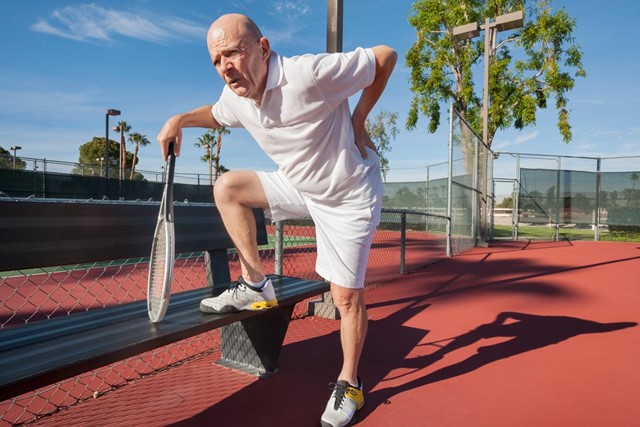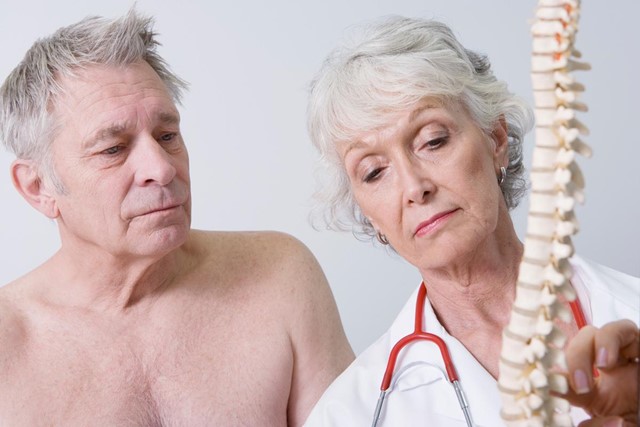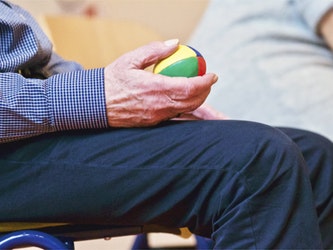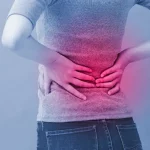
The normal shape of a spine can be affected by a condition referred to as scoliosis.
This condition alters a person’s trunk alignment and posture. The condition may also cause the spine to move to the side or turn.
It is a condition that can occur at any time during one’s lifetime. However, the problem is more common to occur during adolescence and old age.
The condition affects 2-3% of the population and is a bit more common in females than in males.
Scoliosis may range from mild to severe cases which require different types of treatments. When the condition is more severe, it may require surgery.
The good news is that scoliosis can be managed by a team of experts including Orthopedic Physicians, Physical Therapists and in severe cases an Occupational Therapist Assistant for help with daily activities.
Today I will share more information about the condition and how you can manage back pain from scoliosis in the comfort of your home.
What is Scoliosis
According to scoliosis research, scoliosis is defined as a curvature of the spine to the side but may also include rotation.
Scoliosis may cause trunk or postural alignment. These are severe cases that may not be corrected when one stands up straight.
If the patient undergoes an x-ray, the spine may appear to be ‘s’ or ‘c’ shaped. All in all the severity of the condition can be determined by measuring the angle of the curvature popularly referred to as a Cobb angle.
For the scoliosis condition to be diagnosed, a minimum of 10 degrees of cobb should be present.
Adolescent Idiopathic Scoliosis (AIS)
AIS is one of the types of scoliosis that can be diagnosed in children between 10 to 18 years. The term idiopathic refers to a situation where the cause cannot easily be identified.
However, it has been observed that about 30% of children with AIS will always have a family history of scoliosis.
- Other types of scoliosis
- Congenital
- Neuromuscular
- Early onset (juvenile and infantile scoliosis)
Congenital scoliosis can occur during the baby’s early development in the womb and can be caused by a deformity in the spine’s bones.
On the other hand, neuromuscular scoliosis may be caused by a medical condition of the nervous system including muscular dystrophy cerebral palsy that makes the muscles that support the spine to weaken.
Early onset of scoliosis may include infantile scoliosis which is diagnosed between ages 0-3 years while juvenile scoliosis may be diagnosed before the age of 10 years.
Nevertheless, the cause of the early onset of the condition is not known.
It should also be mentioned that Degenerative Lumbar Scoliosis, a coronal deviation of the spine, occurs in the elderly demographic.

However, as mentioned earlier, scoliosis occurs most often in adolescents.
How it Feels to Have Scoliosis
Even though scoliosis is by itself a pain-free condition it often leads to discomfort and pain.
If the spine curves abnormally, it may affect the surrounding joints and muscles. This may alter a person’s posture, alignment, and movement patterns and cause pain or irritation.
Sort of how our feet can cause pain in our spine or how an ankle sprain without PT can lead to pain in nearby areas like the knee.
The body is connected, so when one part alters the person’s posture, position, and/or movement other parts are impacted.
The muscles supporting the spine may become imbalanced and this could lead to loss of strength and flexibility.
Anyone suffering from the condition may note:
- Uneven shoulder height
- Uneven waistline
- Uneven hip height
- A feeling that the 2 sides of the body are not line up
- Pain around the pelvis, the shoulder, hip, and the spin
- May feel pain when he makes certain movements
When physical therapy is administered, it helps to identify the condition and can help in restoring and maintaining mobility so that one can function at their best and improve the type of life they are leading.

How Scoliosis is Diagnosed
It can be detected during a physical examination or screening performed by a school nurse, a physical therapist and a pediatrician. This is crucial and can facilitate early treatment.
The physical therapist may want to know the medical history of the patient and specific questions about the current activities and the family health history.
The therapist may then examine the spine including checking factors such as strength, feelings of tenderness, flexibility and the presence of any swelling. The child may be required to demonstrate certain activities that are difficult and which may cause pain if the condition is present.
The therapist will then identify the symptoms being experienced and which causes the curving of the spine. Any patient who goes to the physical therapist before seeing a physician may be referred to the orthopedic physician so that radiography can be done to confirm the presence of scoliosis.
Physical Therapy Exercises for Scoliosis
These videos share some of the physical therapy exercises you can do from home to help manage Scoliosis and back pain.
Here are some physical therapy exercises for scoliosis:
Here is a video of what is known as the “Schroth Method” developed in Germany in 1927 as a method of scoliosis treatment exercises:
One of the treatment options available for scoliosis includes bracing, surgery and physical therapy. The type of treatment to be adopted depends on the severity of scoliosis, the age, and the guidelines that have been established by the Scoliosis Research Society (SRS).
During the process of treating scoliosis, a physical therapist must always provide, assess the movement patterns, and the posture of the body and not any limitations brought about by the changes in the spine.
They must also address symptoms such as muscle imbalances and pain.
The physical therapist will work with the patient and provide an individualized plan tailored to the type of severity of scoliosis or the patient’s goal.
Once the patient has their plan, much of it will be implemented at home with scheduled clinic visits.
The physician must closely monitor how the patient progresses during the rehabilitation process and adjust treatment as needed.
Some Physical therapy treatments are:
- Range-of-motion Exercises – The therapist must design a gentle range of motion programs meant to increase the body’s range of motion in a case where the movement limitations are present.
- Strength Training – The therapist designs programs meant to strengthen the muscles surrounding the weakened parts of the body or the surrounding spine. The parts may include the hips, the head, the shoulder, and the feet.
- Manual Therapy – The therapists apply gentle motion to the joint and the muscle tissues restricted by the condition. In most of the cases, they use their hands to guide the movement patterns.
- Modalities – This is the use of other treatment methods such as ice, electrical stimulation, heat, and ultrasound to achieve certain goals.
- Functional training – The therapists are trained and will assess the movement patterns and provide education that can help to manage the movement patterns and optimal movement of the body.
- Education – The physical therapist will provide information on scoliosis and the effect it can have on body movement.
Can the Condition be Prevented?
Even though the condition cannot be prevented, there is ongoing research on the treatment that can help to stop the progression of the condition such as bracing.
Bracing has been demonstrated to effectively limit the progression of the spinal curves.
Thus the primary aim of the physical therapy is to manage the symptoms and maximize one’s functional capacity.
A team approach is the best method of maximizing treatment.
Are you suffering from Scoliosis? Tell us about your experience managing the condition in the comments below!
About The Author:
Crystal is a medical assistant who blogs at medical-assistant.us. When she isn’t busy running around with her kids, or giving someone shots, you can find her blogging about wellness, medicine, and healthcare.




